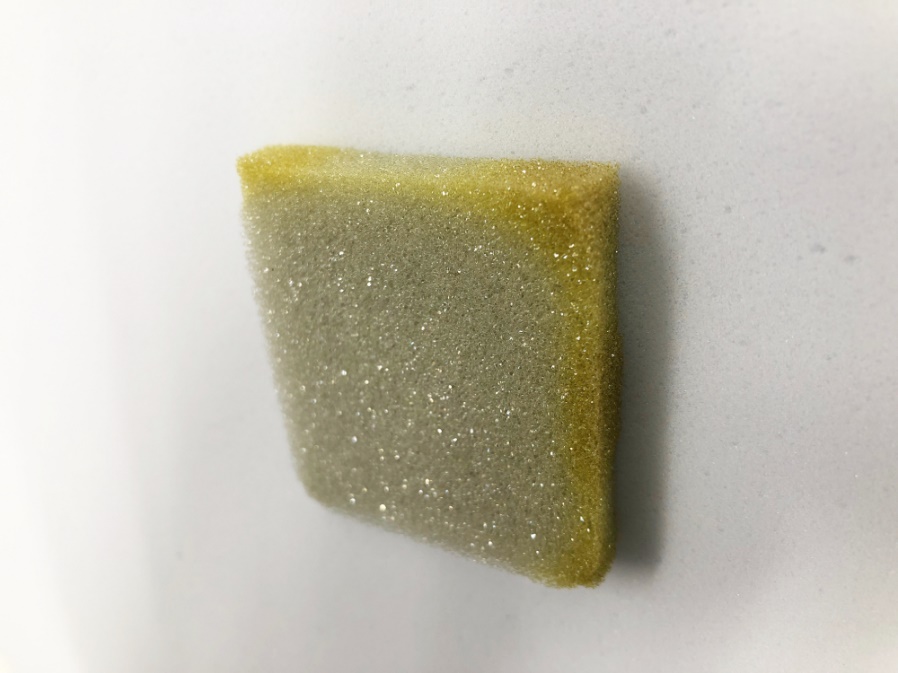Problems with urethane sound absorbing materials
07/09/2024

Others
Degradation over time of polyurethane sponge
The photograph here shows an example where polyurethane sound-absorbing material, originally light gray in color, has yellowed due to aging.
Yellowing occurs when sponges that were originally white or gray discolor to yellow due to factors such as ultraviolet rays. Lighter colors are particularly susceptible to yellowing.
In contrast, darker colors like black may not show yellowing as prominently.
Some polyurethane sponges are prone to aging. In environments where they are exposed to direct sunlight or air, the aging process can accelerate.
In addition to yellowing, these sponges may also deteriorate, with the surface crumbling into a powdery texture. When selecting sponges exposed to air for interior sound absorption purposes, it is important to choose those suitable for such environments.
Fire resistance of polyurethane sponge
Polyurethane sponge does not possess the flame retardant certification required by the Ministry of Land (JAPAN), Infrastructure, Transport and Tourism, thus it cannot be used in environments subject to architectural interior restrictions. In simpler terms, it means it can easily catch fire.
Sound absorption of polyurethane sponge
Polyurethane sponges of continuous or semi-continuous foam types offer some level of sound absorption. However, they do not provide high sound absorption compared to materials like glass wool or rock wool under equivalent conditions. Melamine foam, however, despite being a sponge material, offers high sound absorption.
In summary, polyurethane sponge has disadvantages such as susceptibility to aging, flammability, and relatively low sound absorption. Caution is advised when using it as interior sound-absorbing material in anechoic chambers or soundproof rooms.”